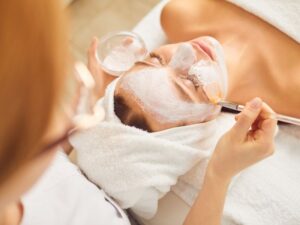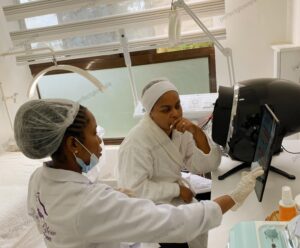The Healing Touch
Massage therapy, an ancient practice rooted in various cultures, has evolved into a sophisticated and multifaceted approach to health and well-being. From the gentle strokes of Swedish massage to the deep pressure of sports massage, each technique offers unique benefits and caters to specific needs. Whether you’re seeking relaxation, pain relief, or improved athletic performance, there’s a massage modality that can help you achieve your goals. Let’s embark on a journey through the diverse landscape of massage therapy.
The Foundation of Healing: Understanding Massage Therapy
Massage therapy involves the manipulation of soft tissues in the body, including muscles, connective tissues, tendons, and ligaments. This hands-on approach aims to promote relaxation, reduce stress, alleviate pain, and improve overall physical and mental well-being. By applying varying degrees of pressure and movement, massage therapists can stimulate blood flow, release tension, and facilitate the body’s natural healing processes.
Massage therapy is not just a luxury; it’s a therapeutic tool that can address a wide range of conditions, including:
- Muscle tension and pain
- Stress and anxiety
- Headaches and migraines
- Sports injuries
- Poor circulation
- Insomnia
- Fibromyalgia
Types of Massage Therapy: A Comprehensive Overview
The world of massage therapy encompasses a vast array of techniques, each with its unique characteristics and benefits. Here’s a closer look at some of the most popular modalities:
1. Swedish Massage: The Classic Relaxing Experience
Swedish massage is the most common and widely recognized type of massage. It involves long, gliding strokes, kneading, friction, tapping, and shaking motions. This gentle and relaxing technique promotes stress reduction, improves circulation, and eases muscle tension. It’s an excellent choice for first-time massage recipients or those seeking a general relaxation experience.
- Key Techniques: Effleurage (long, gliding strokes), petrissage (kneading), friction, tapotement (tapping), and vibration.
- Benefits: Relaxation, stress reduction, improved circulation, muscle tension relief, and enhanced flexibility.
2. Deep Tissue Massage: Targeting Deep Muscle Tension
Deep tissue massage focuses on reaching the deeper layers of muscle tissue and fascia (connective tissue). It utilizes slow, deliberate strokes and deep finger pressure to release chronic muscle tension, knots, and adhesions. This type of massage is often recommended for individuals with chronic pain, sports injuries, or postural problems.
- Key Techniques: Slow, deliberate strokes with deep finger pressure, targeting specific muscle layers and fascia.
- Benefits: Chronic pain relief, muscle tension release, improved posture, and increased range of motion.
3. Sports Massage: Enhancing Athletic Performance and Recovery
Sports massage is specifically designed for athletes and individuals involved in physical activity. It incorporates various techniques, including deep tissue massage, stretching, and compression, to enhance athletic performance, prevent injuries, and promote faster recovery. This type of massage can be used before, during, or after athletic events.
- Key Techniques: Deep tissue massage, stretching, compression, and trigger point therapy.
- Benefits: Improved athletic performance, injury prevention, faster recovery, reduced muscle soreness, and increased flexibility.
4. Hot Stone Massage: Melting Away Tension with Warmth
Hot stone massage utilizes smooth, heated stones placed on specific points of the body. The warmth of the stones helps to relax muscles, improve circulation, and melt away tension. This type of massage is particularly beneficial for individuals with muscle stiffness, stress, or anxiety.
- Key Techniques: Placement of heated stones on specific points, combined with Swedish massage techniques.
- Benefits: Muscle relaxation, stress reduction, improved circulation, pain relief, and enhanced relaxation.
5. Shiatsu Massage: Balancing Energy Flow
Shiatsu, a Japanese massage technique, involves applying pressure to specific points on the body, known as acupressure points, to balance energy flow and promote healing. This type of massage is based on the principles of traditional Chinese medicine and aims to restore harmony to the body’s energy meridians.
- Key Techniques: Finger pressure applied to acupressure points, stretching, and joint mobilization.
- Benefits: Energy balance, stress reduction, pain relief, improved circulation, and enhanced well-being.
6. Thai Massage: A Combination of Stretching and Pressure
Thai massage, an ancient healing system, combines stretching, compression, and acupressure techniques. It’s performed on a mat on the floor, and the recipient wears loose, comfortable clothing. This type of massage aims to improve flexibility, release muscle tension, and balance energy flow.
- Key Techniques: Stretching, compression, acupressure, and joint mobilization.
- Benefits: Increased flexibility, muscle tension relief, improved circulation, energy balance, and stress reduction.
7. Prenatal Massage: Supporting Expecting Mothers
Prenatal massage is specifically designed for pregnant women. It utilizes gentle techniques to address the unique needs and challenges of pregnancy, such as back pain, swelling, and fatigue. This type of massage can help to promote relaxation, improve circulation, and alleviate discomfort during pregnancy.
- Key Techniques: Gentle Swedish massage techniques, focusing on comfort and safety.
- Benefits: Pain relief, stress reduction, improved circulation, reduced swelling, and enhanced relaxation for expecting mothers.
Choosing the Right Massage Therapist
The effectiveness of massage therapy depends on the skill and experience of the massage therapist. When choosing a therapist, consider the following:
- Certification and Licensing: Ensure the therapist is licensed and certified by a reputable organization.
- Experience: Look for a therapist with experience in the specific modality you’re interested in.
- Communication: Choose a therapist who listens to your concerns and communicates effectively.
- Referrals: Seek referrals from friends, family, or healthcare professionals.
Conclusion
Massage therapy offers a diverse range of techniques to address various health and wellness needs. From the relaxing strokes of Swedish massage to the targeted pressure of deep tissue massage, each modality provides unique benefits. By exploring the world of massage therapy and choosing the right therapist, you can unlock the healing power of touch and enhance your overall well-being.




